Rainbows, Tunnels and Playing, Oh My!
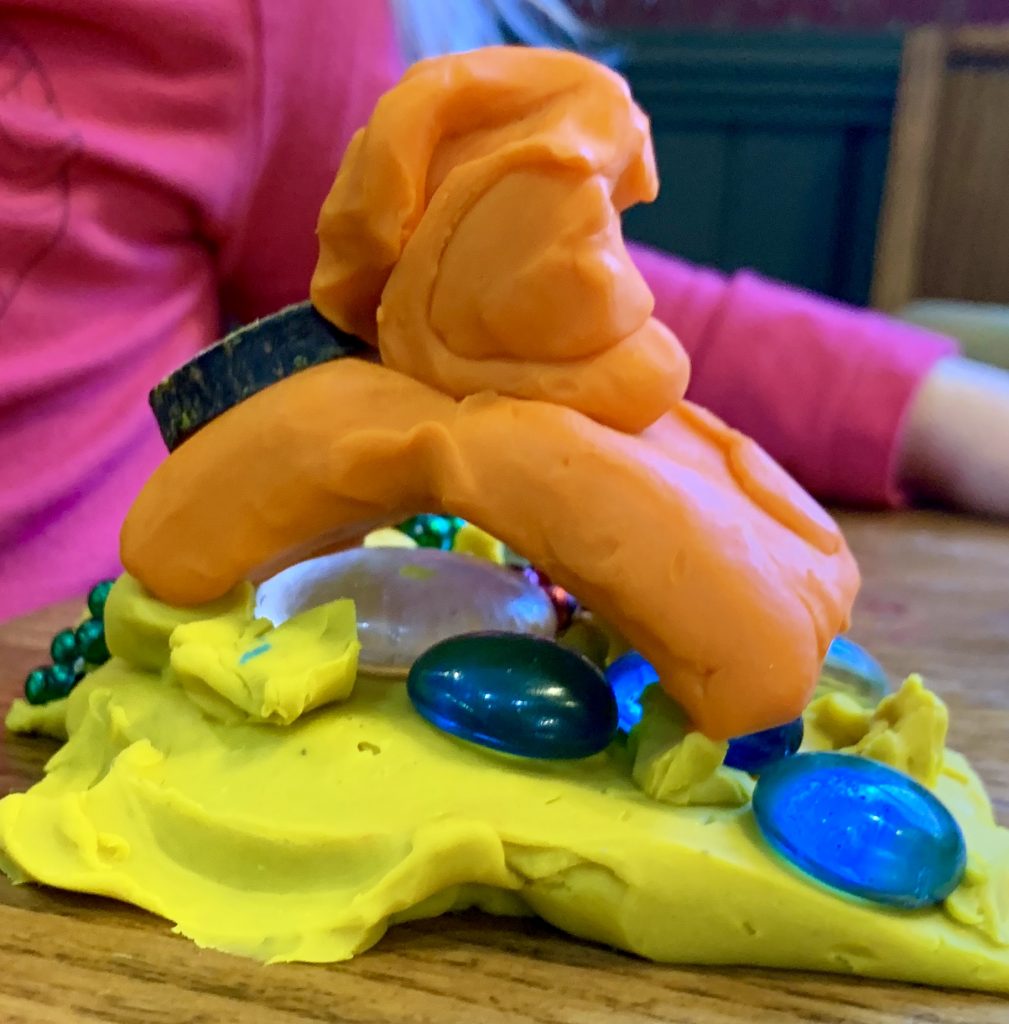 “Look, look, I made a rainbow!” exclaims three-year-old Evelyn. We are at the clay table and I take a look at her creation. A small orange arch, decorated with gemstones and tree bark and Mardi Gras beads sits on a yellow clay base.
“Look, look, I made a rainbow!” exclaims three-year-old Evelyn. We are at the clay table and I take a look at her creation. A small orange arch, decorated with gemstones and tree bark and Mardi Gras beads sits on a yellow clay base.
“It is a rainbow!” Noah responds gleefully! “I can make a rainbow, too!”

As Noah begins to create a rainbow, I extend the learning by mentioning that the shape is also called an arch. “My grandma lives by the Arch!” Noah shouts. Evelyn thinks she has seen the Arch, too.
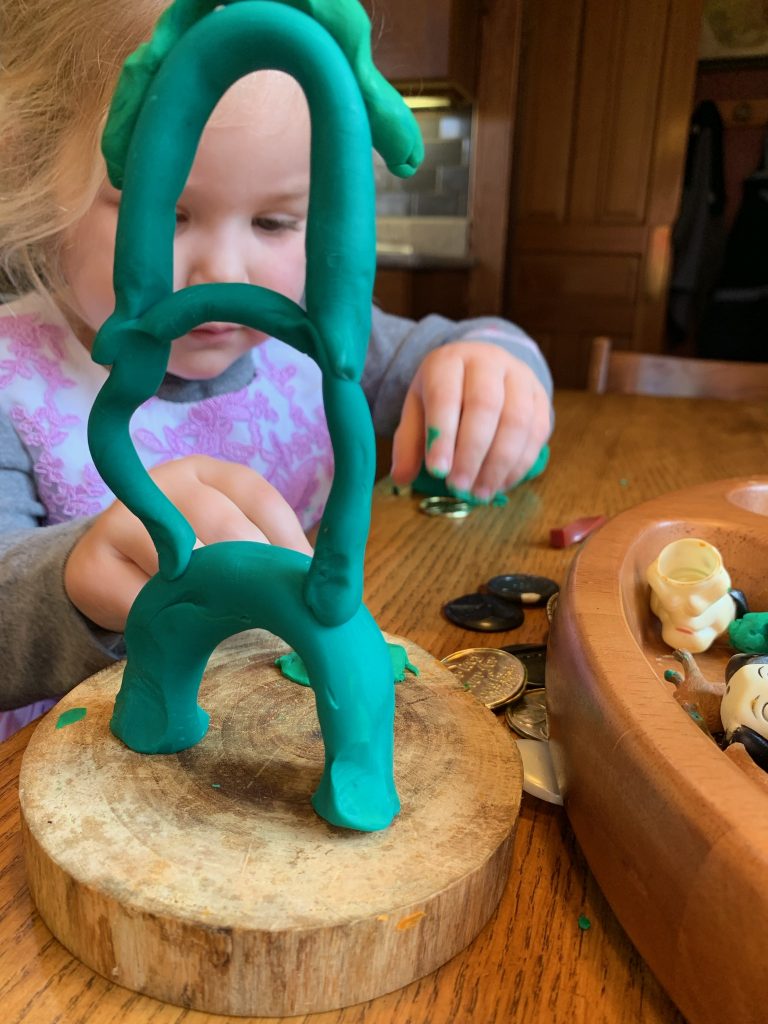
And so begins our investigation of arches. All of the arch blocks and books come into rotation to become pieces of our classroom landscape. We begin to see more arches appearing in our clay play, our drawings and our block play.
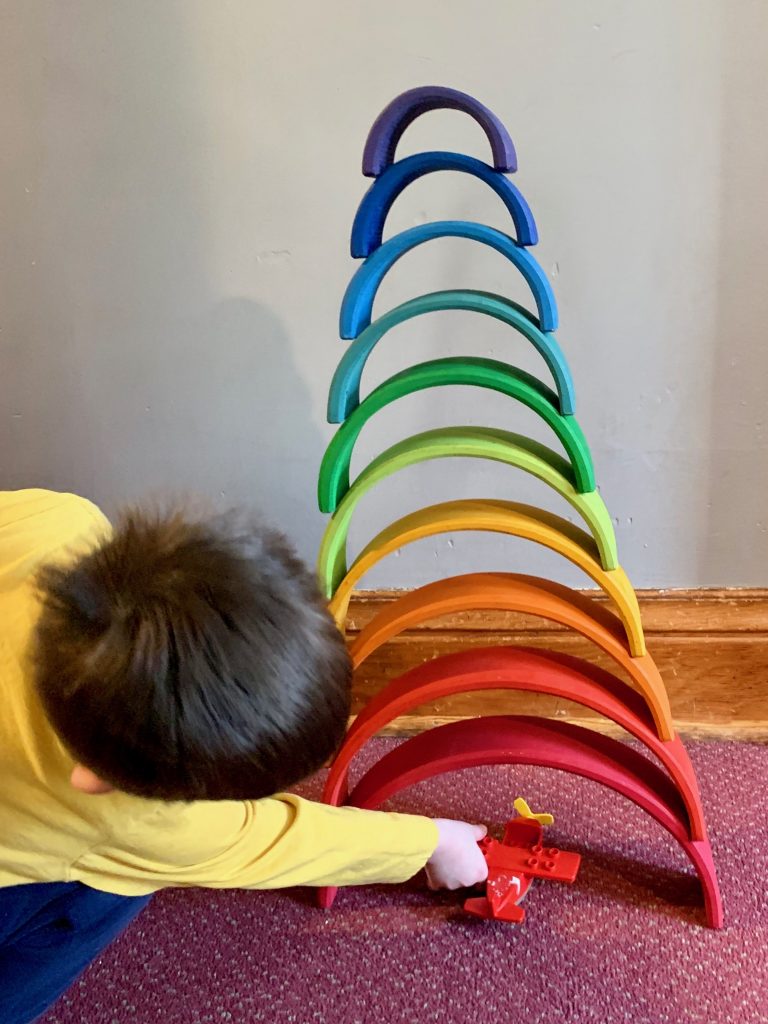 We often develop our intentional learning experiences in response to the interests of our children. We never really know what directions our conversations will take us! This group really likes pattern blocks, which are like puzzles to them. I see the children play with these blocks for long stretches of time and, once they think they have figured out the pattern, they do them over and over and over again.
We often develop our intentional learning experiences in response to the interests of our children. We never really know what directions our conversations will take us! This group really likes pattern blocks, which are like puzzles to them. I see the children play with these blocks for long stretches of time and, once they think they have figured out the pattern, they do them over and over and over again.
Suddenly, our arches are being used as homes for people…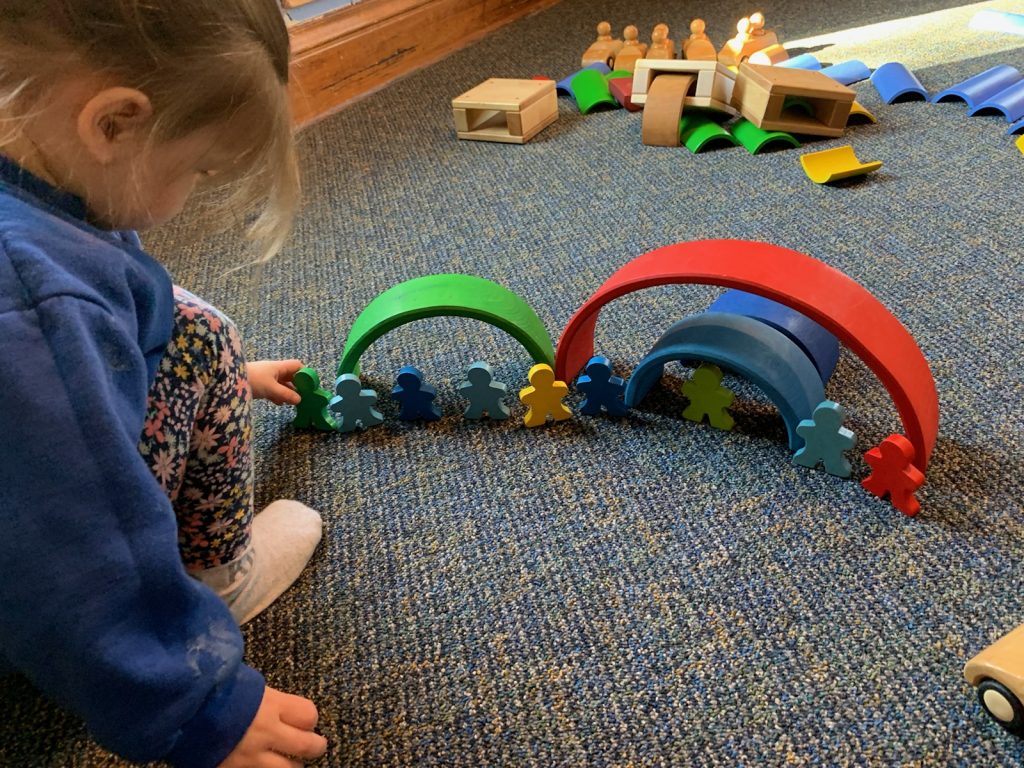
… and as habitats for our finger puppets.
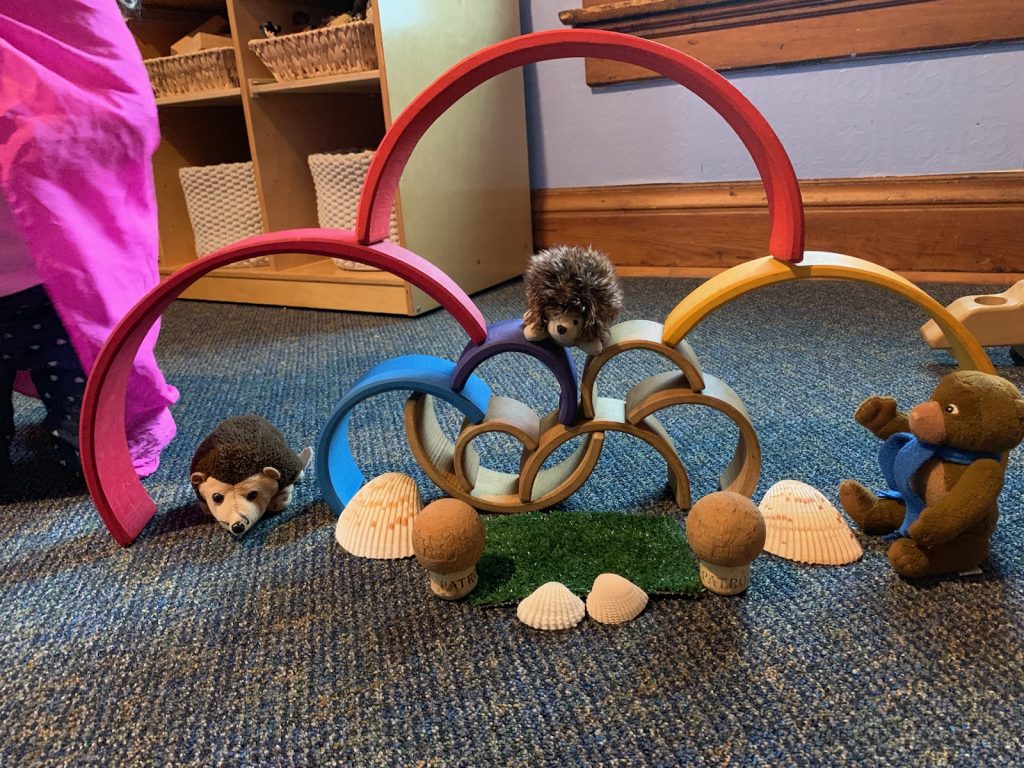
We see bodies being formed into arches in the block area.
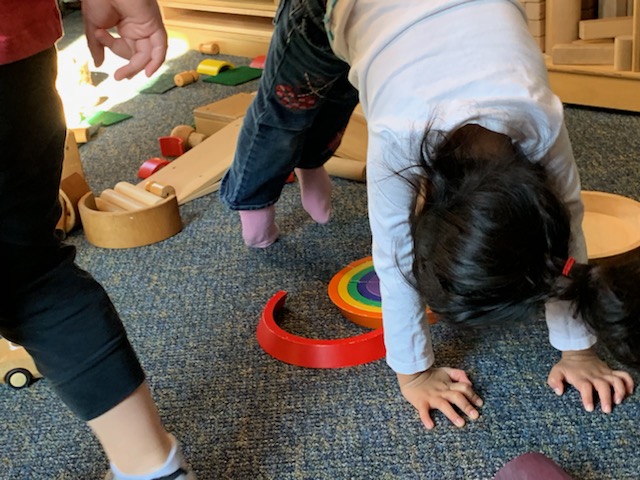
When our young learners don’t have the vocabulary to represent their understanding of a new subject, they often express their ideas through drawings, paintings, music and other creative outlets. When we weave learning into various activities, we provide rich and meaningful learning opportunities for our students. While they are moving and playing with these materials, their spatial reasoning and their understanding of geometric attributes is growing. Shapes, location and direction are all spatial attributes.
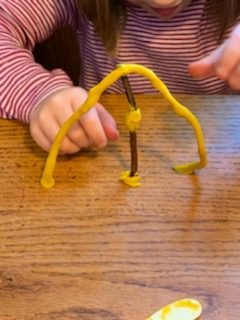
When we manipulate our clay into shapes by rotating and cutting it or combining it with another structure, we are beginning to understand how the pieces relate to each other and the space around them. This is spatial transformation. Math, math and more math. Math isn’t just about numbers and counting. The way that young children talk about space is a significant early predictor of their future spatial cognition.
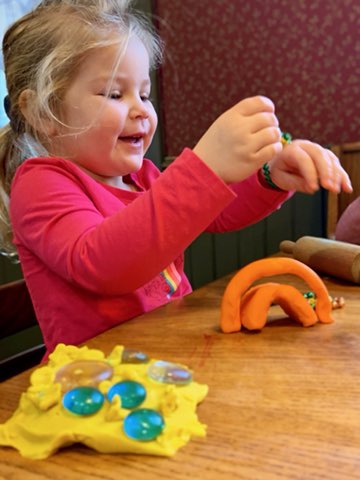
Spatial skills also strongly predict who will pursue STEM careers—and research suggests that children’s spatial reasoning skills are more predictive of future creativity and innovation in the STEM disciplines than math scores. Using mathematical language and concepts creates that rock-solid math foundation that we strive for!
I absolutely love the creativity that a child has. We a educators should help expand their creativity
Great to be able to broaden arches to multiply areas of learning
I really liked how the rainbows led into all of the talking about arches!
I really enjoyed the concept of using the rainbow, and how the children interpreted the arches.
Amazing how we can extend learning and creativity in all different areas.
children can be so creative with the simplest of items.. we just need them to encourage their imagination and not step into their too quickly
I love these color based activities!!
I love the hands on learning and how the children come up with their own ideas of spatial transformation.
Love how creative they are.
I have found that letting the children use their creativity to learn a new skill is the way they will learn fastest and retain what they’ve learned better.
I love how making rainbows turned in to all the arch talk and activities.
Love how the first rainbow evolved into so many activities.
Their work is so creative
Never thought about extending a math interest in this way. Thank you
I really like and can relate to this activity. It is amazing how making rainbows lead to conversation of arches and children were able to be creative.
I always love when children can make the correct rainbow patterns. It’s an a-ha moment for them, even when they might not know the Roy G Biv way to remember the pattern!
Genial la diferentes formas de trabajar solo con arcos
Loved the connection between something being shaped like an arch and their grandma living by the arch!
I love the fact that these children are working on geometry and the don’t even realize it. It’s just the natural progression of their play.
my students love building and I think it is a great way to fit spacial awareness into their play time.
its amazing how everyday play can be turned into a teaching moment for early math
I loved this activity – arches can be used in so many ways and it all starts with a beautiful rainbow.
I love that children can use their creative expression to put together anything that we challenge them to create. This activity is full of opportunities to discuss spatial awareness with them and incorporate the vocabulary to get them to understand the placement of those objects that they are manipulating.